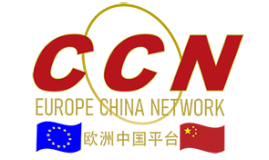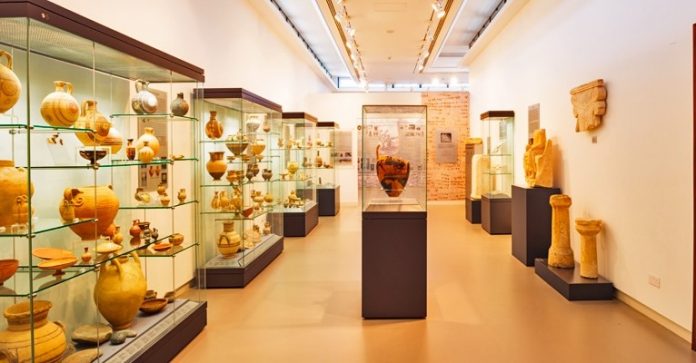Local Archaeological Museum of Ancient Idalion
The Local Museum of Ancient Idalion was founded in 2007 with the aim to promote the rich finds of the region of Idalion (Dali), and later to function as a Visitor Centre for the archaeological site in which it is located.
The exhibits of the museum represent all the chronological phases of the history of Idalion and come from both the old and the more recent excavations of the area of the ancient city, from both settlements and cemeteries.
The first exhibition hall includes information on the history of the site and its excavation, along with photographs of the most important finds that are now housed in museums abroad. It also showcases various other exhibits. The second gallery exhibits inscriptions that bear witness to the conquest of the kingdom, as well as a part of the archive of the Phoenician administration of the city. Funerary monuments, pottery types and objects of daily use of all periods, imported pottery types and typical examples of clay and stone statuary are also showcased.
According to legend, Dali is where Adonis – Aphrodite’s lover – was killed by her jealous lover Aris, the Olympian God of War.
The region is linked with the Aphrodite Cultural Route.
The Avgorou Ethnographic Museum
The Ethnographic Museum in the village of Avgorou is housed in a 1921 twostorey, traditional residence (the Koutras House), and depicts the daily life of previous generations.
Amongst its exhibits are rare 19th century woodcarved furniture, costumes, silverware and pottery, a collection of paintings by selftaught Cypriot artists, and priceless traditional textiles and embroideries of the 18th – 19th century, as well as many other traditional utensils and tools.
The museum also has a large courtyard, stockyard, water reservoir and wheelwell.

Thalassa Agia Napa Municipal Museum
Named after the Greek word for ‘sea’ – the Thalassa Museum was created to promote awareness of the marine heritage of Cyprus from prehistoric times to the present, and is a modern, interactive museum, housed in a multipurpose cultural centre.
Pride of place among the exhibits is a lifesize replica of the famous 4th century Greek trading ship ‘Keryneia II’ that sank off the coast of Keryneia around the year 300 BC. Due to the museum’s design, the ship can be viewed from different levels, including a birdseye view – as can the other exhibits, that include pottery and other antiquities.
Housed in the basement is a marine life section with various exhibits, from fish and sea mammals to crustaceans, corals, shells and fossils – some dating back 130 million years ago.
The museum also functions as an arts exhibition centre, as well as a multipurpose hall for a variety of events and conferences.
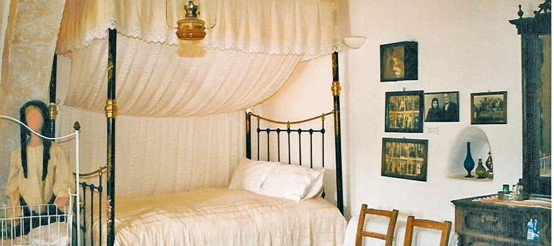
Deryneia Folkloric Museum / Open Air Museum for Traditional Professions
Housed in an old traditional residence, Deryneia Folk Art Museum exhibits a collection of everyday agricultural tools and equipment used by traditional farming families of bygone times.
Located opposite is the Open Air Traditional Folk Art Museum which further showcases traditional professions in its exhibition rooms, including that of furniture and shoe maker, carpenter, tailor, blacksmith, builder, barber, sculptor, fisherman and farmer, among others. Exhibitions are also held on the grounds, along with civil marriages and other cultural events.
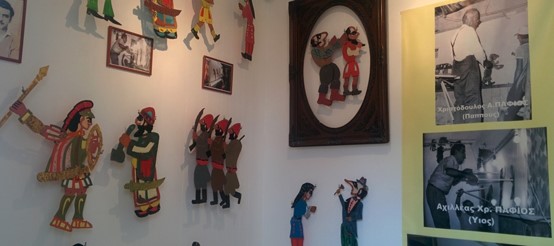
Cultural Centre of Famagusta (Ammochostos) Municipality
The Cultural Centre of Occupied Ammochostos (Famagusta) was created to host regular presentations and briefings regarding the prevailing ‘Cyprus Problem’ – the resulting division of the island following the Turkish invasion of 1974.
Binoculars are available for viewing the occupied city of Ammochostos, and there is also a small photographic exhibition.
Museum – Workshop of Shadow Theatre (Karagiozis) Pafios
The Museum-Workshop of Shadow Theatre Pafios aims to present and promote the folk culture of our country. The museum exhibited figures, theatrical objects and family artifacts of the popular karagioz player Christodoulos Pafios (1904-1987), his son Achilleas Pafios (1928-1987) and grandson Christos A. Pafios, items which demonstrate the survival of folk art of Cyprus Shadow Theatre Karagiozis. In the museum area there is also a manufacturing figures workshop.
The museum is open to the public for guided tour and acquaintance with the heroes of the Shadow Theatre. During their visit they can learn about manufacturing of figures and how to becοme a “Karagioz player” as they can stand on our stage and learn how to act. Also, we are organizing theatrical shows of Karagiozis at schools, in festivals and culture events all over the country.
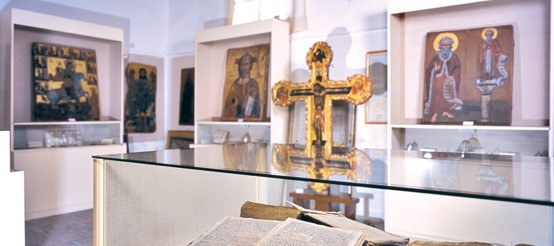
Paralimni Folkloric Museum
Housed in a traditional 19th century residence that belongs to the municipality of Paralimni, the Paralimni Folkloric Museum exhibits a collection of Cypriot art and everyday tools and implements that showcase the oldenday, rural life of the local inhabitants of the area.
The museum offers an interesting insight into the traditions and pastimes of previous generations, whilst the building also functions as a multipurpose centre for exhibitions, cultural events and civil marriages.
Agios Lazaros Byzantine Museum
The Byzantine Museum at the church of Agios Lazaros is housed in some of the cells of the hypostyle porch that still stand to its south. The museum’s exhibits include important religious icons, artefacts and relics, including Byzantine icons, gospels, crosses and other ecclesiastical treasures from the whole district of Larnaka (Larnaca).
The church itself is located in its own, picturesque square in the centre of town. It is one of the most remarkable examples of Byzantine architecture in Cyprus and lies over the tomb of the saint, who came to Cyprus after being resurrected by Jesus. He was ordained as Bishop of Kition by the Apostles Barnabas and Paul and lived in the town for 30 years.
Saint Lazarus is so revered that a procession is held in his honour eight days before Easter. During the procession, the icon of the saint is carried through the streets of Larnaka.
Folklore Museum “Kostas Kaimakliotis” – Aradippou
The Folklore Museum in the village of Aradippou was founded in 2007 as a centre for preserving, researching and promoting Cypriot Folklore Tradition.
Housed in a 1901 mansion, the museum uses the basement and upper storey of the building for exhibits, whilst the small amphitheatre in the yard is used for cultural and artistic performances and exhibitions during the summer.
The museum basement consists of a Sun Room, Family Chamber, Weaving Hall,Domestic Appliances Hall, Farming and Animal Raising Hall, and Traditional Jobs Hall. From March – May, visitors can watch the seasonal process of breeding silkworms as they make their cocoons and then hatch as silk moths.
There are two rooms contained in the upper storey; a single room and the Hall of the Social and Cultural Traditions of Aradippou, where a re-enactment of the traditional wedding ritual ‘the dressing of the bride’ takes place.
The building of the museum originally belonged to the Kostas Xatzikakou family. It was later bought by the Pavlos Konstantinides family and then the Kaimakliotis family, who in turn donated it to Aradippou Municipality in memory of Kostas Kaimakliotis.
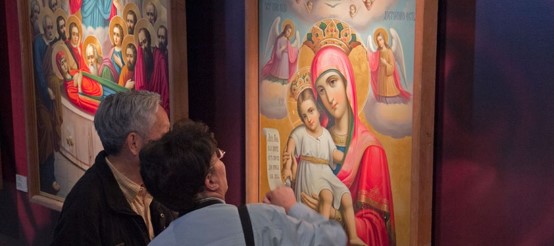
Kallinikeio Municipal Museum of Athienou
The Kallinikeio Municipal Museum of Athienou is housed in the Kallinikeio Municipal Hall and exhibits collections that showcase aspects of the history of the area from the Late Bronze Age (1600-1050 BC) until today.
The Museum consists of the Archaeological Collection, the Collection of Ecclesiastical Art and the Ethnographic Collection.
The Collection of Ecclesiastical Art includes priceless icons painted by the monk Kallinikos Stavrovouniotis and other icons from his personal collection. The monk was an excellent icon painter and a great benefactor to Athienou, and thus the museum is named in his honour. In the Icon Painting and Mosaic Workshop, icons and mosaics by the brothers George and Alkis Kepola are on display.
The Ethnographic Collection presents the daily life of the people of the 20th century through photographic material and other objects.
The museum also organises tours, periodic exhibitions, educational programmes, presentations and conferences.

Archaeological Museum of the Larnaka (Larnaca) District
The Museum is closed to the public until the end of September 2018, due to renovation works.
Larnaka (Larnaca) District Archaeological Museum houses a large collection of archaeological finds from the whole district of Larnaka, including the ancient city-kingdom of Kition, and the main Neolithic settlements of Choirokitia and Tenta – Kalavasos.
Exhibits include artefacts from the Neolithic period, the Copper Era and the Archaic, Classical, Hellenistic and Roman periods. Faience (tin-glazed pottery), ivory and alabaster pieces showcase Cyprus’ commercial and international ties with different countries during antiquity.
Aside from the large collection of local exhibits, the museum also displays some unique items of Egyptian, Mycenaean, Phoenician, Assyrian and Persian origin that were found in the region of Larnaka, but may have been imported from the other great civilizations of antiquity close to the island.
The museum is linked with the Aphrodite Cultural Route.

Larnaka (Larnaca) Medieval Museum
Larnaka’s (Larnaca’s) Medieval Museum is housed on the second floor of the Medieval Fort, located at the end of the palm-tree lined promenade of Foinikoudes.
The museum’s collection – across three rooms – covers 15 centuries of history, with exhibits and artefacts from the Early Christian period (4th-7th centuries), Byzantine wall-paintings of the 11th – 16th centuries, Medieval glazed pottery from the 12th-18th century, helmets and swords of the Venetian period (15th-16th century), and metal cooking utensils of the Ottoman period (18th-19th century).
The courtyard features a collection of Ottoman cannons and also accommodates a 600-seat open-air theatre that is used for functions in the summer.
The fort was originally built during the Middle Ages and took its present form during Ottoman rule. After the end of the Ottoman era in Cyprus, the British converted it into a prison and it was used during the first years of their rule.
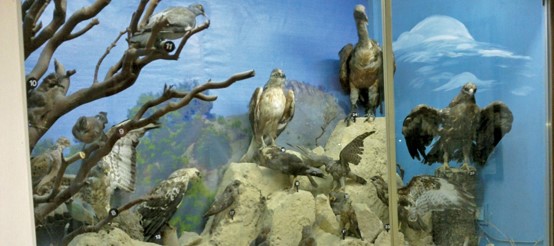
Larnaka (Larnaca) Municipal Museum of Natural History
Located within the grounds of the Municipal Gardens and its park, Larnaka’s (Larnaca’s) quaint Municipal Museum of Natural History displays a number of thematic collections, including local reptiles, insects, birds, animals, marine life, fossils and rock formations.
The marine life collection is comprised of international and local shells, corals, sponges and sea creatures, whilst a ‘traditional Cypriot yard’ includes the Cyprus donkey. Another notable collection is that of the island’s insects and endemic plants.
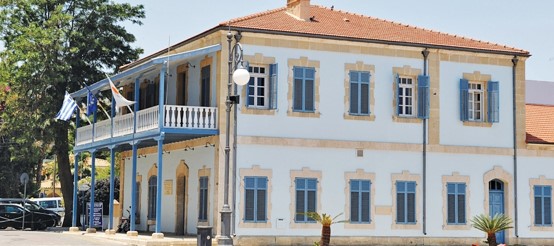
Municipal Historical Archives – Museum of Larnaka (Larnaca)
Located at the start of the Foinikoudes promenade on Europe Square, the Municipal Historical Archives – Museum of Larnaka (Larnaca) are part of the Municipal Cultural Centre that is housed in the complex of 1881 British Colonial buildings. Following their restoration, the buildings earned the 1996 ‘Europa Nostra’ award.
The Museum of Larnaka is on the ground floor of the restored residence and offices of the first colonial Port Master of Larnaka, whilst the Municipal Historical Archives are situated on the second floor.
The exhibits of the museum are related to the history of Larnaka and include a large collection of coins from the city-kingdom of Kition (late 6th century), along with photographs of the city from 1850 onwards.
The Municipal Historical Archives, which consist of rare books, documents and articles, are accessible only to researchers.
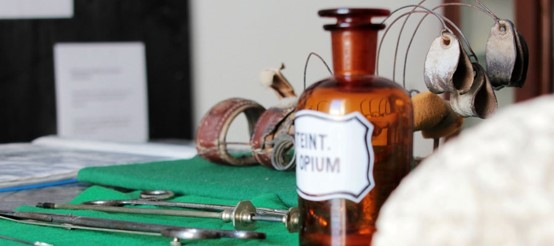
Medical Museum Kyriazi – Larnaka (Larnaca)
Housed in a traditional 1927 mansion in the centre of Larnaka (Larnaca), the Medical Museum of Kyriazi showcases the medical, healing and health history of Cyprus, and its strong connections throughout Antiquity, the Middle Ages and the Ottoman period.
The exhibits range from Ancient Roman times to the 1980’s, with the main collection covering the period 1850-1950 AC. Included are old books, framed documents, traditional pharmaceutical furniture and other medical items and equipment; X-ray machine, surgical instruments and a filled pharmacists display unit, amongst others.
Most items originate from the Larnaka area and were donated to the museum, which is a non-profit, non-governmental organization (NGO) that was set-up by doctors, pharmacists, historians and interested members of the public.
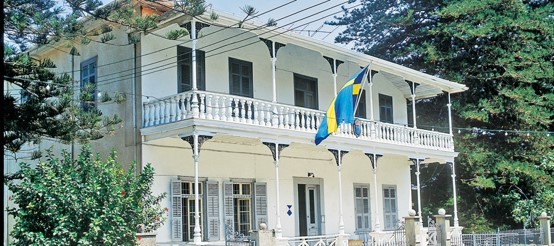
Pierides Museum – Bank of Cyprus Cultural Foundation
The Pierides Museum is the oldest private museum in Cyprus, and is housed in the ancestral Pierides family home – a colonial-style building built in 1815.
The museum’s comprehensive collection was assembled by the Pierides family and includes some of the most representative items of the island’s civilisation. It charts its economic, social and cultural development over thousands of years.
The objects on display date from 4000 BC to the 15th century AD, and are an important testimony to a centuries-old civilisation that flourished in Cyprus. Prized items in the collection are the red polished ware from the Early Bronze Age, Roman glassware, and medieval ceramic dishes. A display case of Modern Greek and Cypriot sculptures can be seen in the courtyard.
The museum is linked with the Aphrodite Cultural Route.
Theasis Museum
Theasis Museum is a multi-cultural entertainment complex housed in an old two-storey mansion, set amidst tropical gardens, lakes and waterfalls.
The venue houses the Owl Museum and an Art Gallery with works by Cypriot and international artists, an outdoor stage, and food and drink facilities.
The Owl Museum houses one of the richest collections of owl effigies in the world, and consists of over 5.000 pieces of the famous nocturnal bird of knowledge from the personal collection of the Bishop of Kition. The pieces are made from gold, silver, alabaster, glass, wood, precious stones, craft and other materials.
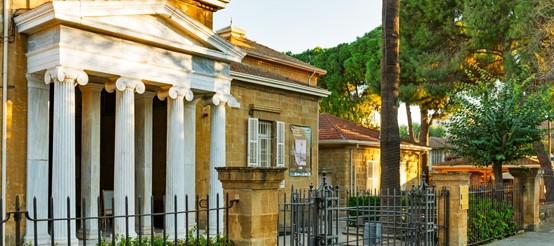
Cyprus Museum
The Cyprus Museum is the island’s main and largest archaeological museum, and charts the development of Cyprus’ civilisation from the Neolithic Age to the Early Byzantine period (7th century).
The museum’s collections are comprised of finds from extensive excavations from all over the island that have helped the development of Cyprus’ archaeology, as well as its research into the cultural heritage of the Mediterranean.
The collections consist of pottery, jewellery, sculpture, coins, copper objects, and other artefacts, all exhibited in chronological order in the various museum galleries. Pieces typical of Cypriot culture – and of particularly important artistic, archaeological and historical value – include the cross-shaped idol of the Chalcolithic period, Early Bronze Age pottery from Vouni, Late Bronze Age golden jewellery from Egkomi, and the 1st century BC statue of Aphrodite of Soloi.
The museum building itself is also historic, and work on it commenced in 1908 and was completed in 1924, when Cyprus was still a British colony. Several extensions were later added for the museum to become the building it is today.
The museum is linked with the Aphrodite Cultural Route.
Archbishop Makarios III Foundation Art Galleries
The four art galleries of the Cultural Centre of the Archbishop Makarios III Foundation exhibit a unique collection of representative works of Western-European art, dating from the Renaissance to modern times, as well as Greek and Cypriot masterpieces.
The first gallery contains works of western European painters such as Nicolas Poussin, Eugene Delacroix and others; the second gallery contains 18th and 19th century paintings, engravings and maps on themes from the 1821 Greek War of Independence; the third gallery contains works of Greek artists from the 19th and 20th century, and the fourth gallery contains representative works of 20th century Cypriot artists.
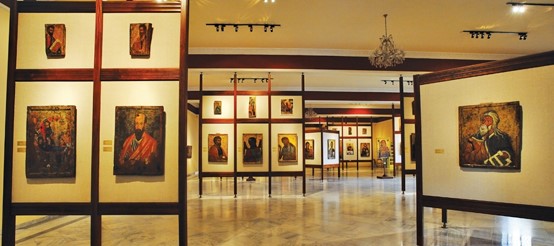
Byzantine Museum
The Byzantine Museum, within the walled city of Lefkosia (Nicosia), contains the richest and most representative collection of Byzantine art on the island. Over 200 icons dating from the 9th to the 19th centuries, as well as sacred vessels, vestments, robes and books are exhibited there.
The collection includes many icons dating from the 12th century, when iconography was at its peak. One of the most notable exhibits is the famous 6th century mosaics from the church of Panagia Kanakaria in Lythragkomi Village, that were brought back to Cyprus after having been illegally exported from the occupied part of the island.
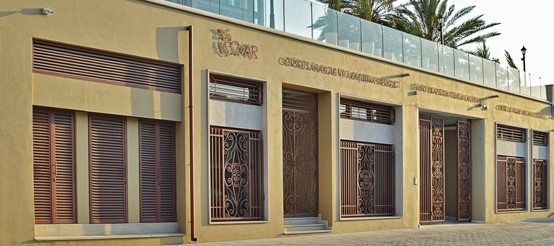
Centre of Visual Arts & Research (CVAR)
The Centre of Visual Arts & Research (CVAR) is the home of the Costas and Rita Severis Foundation – a non-governmental, non-profit organisation that provides a platform for the exploration of Cyprus’ cultural heritage.
The CVAR is comprised of a four-storey exhibition area, research centre, conference hall, café, roof terrace lounge and gift shop, all housed in a building within the historic walled city of Lefkosia (Nicosia) that was originally an ottoman-era Khan, and was later converted into a flour mill in 1953.
The Centre houses a unique collection of paintings and artefacts that highlight the island’s multicultural past over the past three centuries, including artwork, costumes, memorabilia, books and archival material from all over the world, that come from the personal collection of Mr. and Mrs Severis.
In addition to its permanent collections, the CVAR also hosts temporary exhibitions, lectures, films and other special events, highlighting the work of local and international artists and scholars.
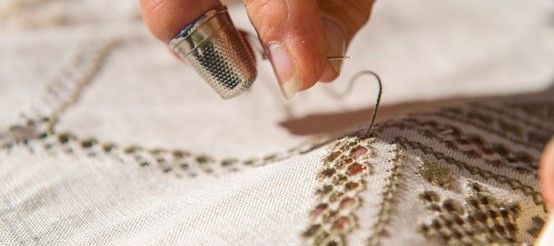
Cyprus Handicraft Centre – Lefkosia (Nicosia)
The Cyprus Handicraft Centre is an outlet for producing and selling traditional folk art and crafts. Visitors can see the artisans engaged in the traditional crafts at the workshops, such as embroidery and lace making, tapestry, weaving, basketry, woodcarving, pottery, metalwork (copperware and silver), leather and garment making.
An exhibition displays the various handicrafts, along with other items such as ceramic tiles and ancient figures, whilst a wide range of the authentic Cypriot handmade goods can also be purchased at the shop.
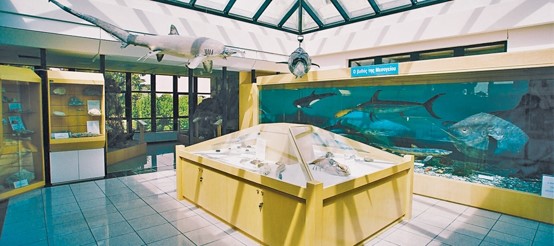
Cyprus Museum of Natural History
Located within the grounds of the Carlsberg Brewery, the museum is the largest natural history exhibition of its kind on the island and was founded by ‘The Photos Photiades Charity, Scientific and Cultural Foundation’. Amongst its 2.500 or so exhibits are: embalmed mammals, birds, fish, reptiles and insects, along with rocks, minerals, semi precious stones, shells and fossils.
Cyprus Police Museum

The museum was originally founded in 1933 during British colonial times as a Criminal Museum by the British Chief of Police of the colonial government.
A substantial part of the museum is dedicated to the history of the Cyprus Police Force, from the British period up to the present day. Visitors can see uniforms, arms, equipment and police vehicles, as well as musical instruments, photographs and documents of the Police Band. The Museum also houses objects and documents from the Second World War and the 1955-1959 National Liberation Struggle.
Cyprus Postal Museum

Located within the walled city of Lefkosia (Nicosia), the Cyprus Postal Museum is housed on the ground floor of an old two-storey mansion. It was founded in 1981 to exhibit the rich and diverse material of the island’s postal history, which started from the 15th century, when postal communications to-and-from Cyprus were organised for the first time during the Venetian period.
The halls of the museum exhibit postage stamps and rich philatelic material in chronological order, including material from the period of British Rule. In particular, the oldest series of Cypriot stamps with the portrait of Queen Victoria of England, which are overprinted with the word ‘Cyprus’, as well as the first dedicated Cypriot series of 1928 that depicts historic sites and figures related to the island’s long history.
Other exhibits include ‘first day of issue’ envelopes and stamps issued since the proclamation of the Republic of Cyprus in 1960 until today, and that showcase the island’s historical dates, great figures, culture, touristic sights, monuments and overall contribution to civilization. Methods of insuring post is also displayed, from sealing-wax to machinery, along with weighing scales and other philatelic books and magazines.
Ethnographic Museum of Cyprus
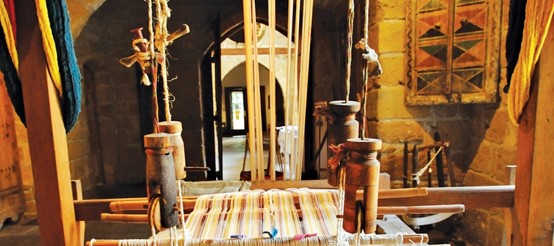
Housed on the ground floor of the Old Archbishopric, the Ethnographic Museum of Cyprus consists of a large collection of 19th and early 20th century Cypriot folk art. The exhibits include a variety of wood-carved objects, tapestry, embroidery, pottery, Cypriot folk costumes and material hand-woven on the loom.
The building of the museum dates back to the 15th century and is of Gothic style architecture with later additions. In the beginning of the 13th century, the area was French (Latin) and the building was used as a monastery by the order of the Benedictines. The Order of St. John-Hospitaliers built a church in honour of St. John, their patron saint, and Hugo 1st was buried here in 1218. The Greek Orthodox Church began using the building sometime before the Ottoman Rule (1571-1878). The richly decorated Gothic arch with the 16th century fresco of the Annunciation, which bears the end of a Greek inscription, was uncovered in 1950.
Loukia and Michael Zampelas Art Museum
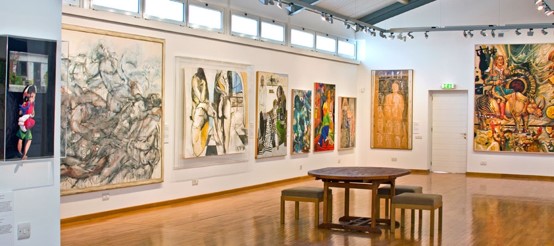
The Art Museum houses the permanent collection of the Zampelas family, which consists of great modern and contemporary art (painting, sculpture and mixed media) of Cypriot artists of the 20th and 21st century, and Greek artists from the 19th through to the 21st century. Temporary exhibitions by artists from Cyprus and abroad are also held, whilst the exhibitions are complemented with educational programmes and other cultural activities. Guided tours are also available.
Museum of George and Nefeli Giabra Pierides Collection
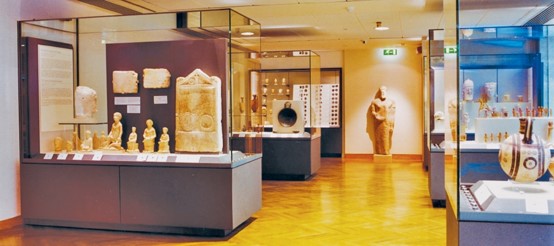
Donated by Clio and Solon Triantafyllides, the museum presents one of the most important private collections of Greek Mycenaean pottery on the island, including a unique anthropomorphic vessel, as well as the white slip and base ring style -two typical forms of pottery from the Late Bronze Age in Cyprus that made the island’s pottery famous the world over.
The richest part of the collection consists of limestone sculptures from the 6th century to the Hellenistic period, whilst the museum also showcases clay figurines, coins, jewellery and copper pieces amongst its hundreds of exhibits.
Thanks to the SPYRA Innovative Digital Archaeological Explorer, visitors can see a simulation of pieces they choose by inserting (imitation) fragments into the base of the machine, which then displays an image of how the exhibit would have looked, along with its relevant information.
The museum is also linked with the Aphrodite Cultural Route.
Byzantine Museum of the Holy Bishopric of Tamasos and Oreinis
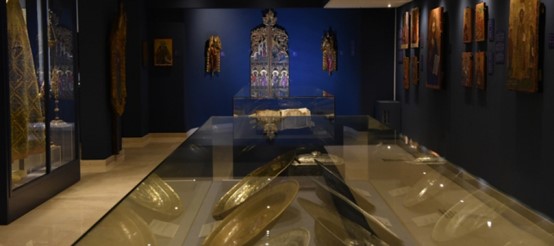
The Byzantine Museum of Holy Bishopric of Tamasos and Oreinis is situated inside the Bishopric Palace, in the community of Episkopeio, Lefkosia (Nicosia).
In the Museum byzantine and post-byzantine artefacts are exhibited, dating from the 5th to the early 20th centuries. Among them you can find icons, liturgical objects, priestly habits, manuscripts, coins, ceramic and other religious objects, mostly coming from several communities of the bishopric region.
The most interesting artefacts are: dedicatory inscription of a paleochristian building from Tamasos (5th century), wooden painted cross (13th century), brass reliquary cross (10th century), brass dishes (15th – 16th century), part of the numismatic hoard of Achera (12th century), Lectionary manuscript (16th century), etc.
Museum on the History of Cypriot Coinage
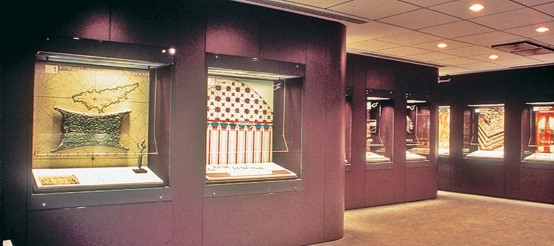
The Museum on the History of Cypriot Coinage was founded in 1995 and traces the development of the island’s coinage from the first coins minted during the 6th century BC to modern times.
A collection of over 500 coins charts 2.600 years of turbulent Cypriot history and is divided into nine time periods (23 showcases), that offer an important source of information on Cyprus’ numismatic history.
The presentation begins with coinage from the Cyprus City Kingdoms (6th – 4th centuries BC) and ends with the Republic of Cyprus (1960). Included in the initial collection is a bronze coin from the Roman period that bears the legend ‘ΚΟΙΝΟ(Ν) ΚΥΠΡΙΩΝ’ (League of the Cypriots) and was a symbol of unity among the peoples of the island. There is also a touch screen presentation of the island’s historical journey of coins throughout different times.
The museum is linked to the Aphrodite Cultural Route.
Pancyprian Geographical Museum
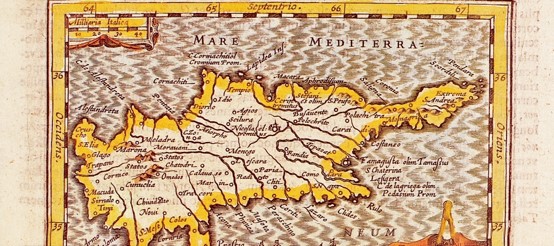
Housed in an old residence near Chrysseleousa Church in the old quarter of Strovolos, the island’s first geographical and natural history museum was established by Strovolos Municipality with the aim of raising environmental awareness, and providing a source of research on the natural history of the island.
The museum displays specimens of the island’s flora, sedimentary and metamorphic rocks and minerals, as well as historic and modern maps and charts of Cyprus within its three main exhibition halls.
Early (Proto) – Industrial Museum – Agia Varvara village
The early industrial workshop of Agia Varvara combines a traditional house with the place of work to form an interesting museum that showcases daily life on the island in years past.
The workshop uses the primitive equipment of the 1920s; flour mill, crushed wheat mill, barley mill and oil mill, which all worked with a single engine that distributed motion to the machines according to the owner’s needs through a combination of transmission shafts, wheels and belts. A wine press and loom were also used by the owner’s wife.
State Gallery of Contemporary Art
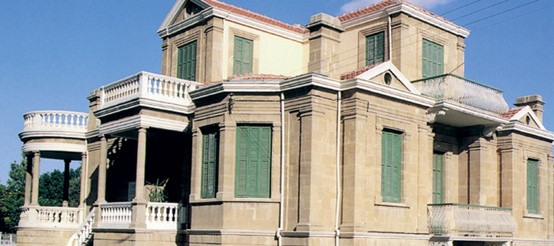
The State Gallery of Contemporary Art is housed in a beautiful restored building with collections that consist of paintings and sculptures by 20th century Cypriot artists.
Cyprus Classic Motorcycle Museum

The Classic Motorcycle Museum was created by motorcycle collector Andreas Nicolaou, and is the culmination of a 20-year labour of love. Today, the collection comprises more than 150 pieces, with motorcycles dated between 1914 – 1983, including AJS, MV Agusta, Matchless, Norton, BSA, Triumph, Ariel, BMW, James, Moto Guzzi, Royal Enfield and many more.
The museum also houses three police bikes that formed part of Archbishop Makarios III’s police escort, a motorcycle belonging to EOKA fighter Stylianos Lenas, and one belonging to the island’s first motorcycle champion – Turkish Cypriot Zeki Isa – along with a photography exhibition.
Leventis Municipal Museum of Lefkosia (Nicosia)

The Leventis Municipal Museum of Lefkosia (Nicosia) is the capital’s only museum that presents the social and historical development of the city, from the Chalcolithic Age until today. Founded in 1984, the museum is named after its donor, the Anastasios G. Leventis Foundation, which bought and restored the museum’s building, which is housed in a complex of traditional buildings. The museum is administered by Lefkosia Municipality.
The collection includes archaeological finds, traditional costumes, photographs, medieval pottery, maps, engravings, jewellery and furniture, with a permanent exhibition of different galleries, as well as spaces for temporary exhibitions from other museums and foundations from Cyprus and abroad.
The permanent exhibition is comprised of: the Nicosia Gallery (3900 BC-325 AD); the Byzantine and Mediaeval Galleries (325-1489 AD); the Venetian Period Galleries (1489-1570 AD); the Ottoman Period Galleries (1570-1878 AD), and the British Period Gallery (1878-1960 AD).
The museum is linked with the Aphrodite Cultural Route.
The Pancyprian Gymnasium Museums
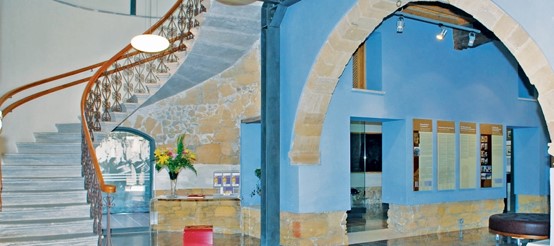
The Pancyprian Gymnasium Museums is a fascinating 12-room space in the historical centre of Lefkosia (Nicosia), depicting the history of the oldest establishment of Secondary Education in Cyprus (Founded in 1812), as well as many other aspects of Cypriot history and culture.
The Museums consist of a Museum of the History of the School, the Archaeological and the Numismatic Collection, collections of old maps and old weaponry, an Art Gallery (that exhibits the work of great painters who served as teachers and students of the school), a Natural History Collection and other varied exhibits. The collection is completed with a unique and impressive sample of gothic sculpture from Cyprus.
Leventis Art Gallery

The A. G. Leventis Gallery represents the fulfillment of a vision. It is the embodiment of Anastasios G. Leventis’ wish to create, in his homeland, a public gallery in which the extensive art collection acquired during his lifetime can be enjoyed by his fellow countrymen, women and children.
Conceived in its essence over fifty years ago, this vision is realized today by the A. G. Leventis Foundation which is proud to present, for the first time under one roof, highlights of over 400 years of European art and history: from paintings, watercolours, prints and drawings to objets d’ art and period furniture.
The original collection comprises three units: the Paris Collection, representing significant European artists from the 17th to the 20th century; the Greek Collection, with artists from the 19th and 20th centuries; and the Cyprus Collection, with the first generation of Cypriot artists, born between 1884 and 1930.
The Nicosia (Lefkosia) Municipal Arts Centre (NiMAC)
The Nicosia (Lefkosia) Municipal Arts Centre (NiMAC) is housed in the building of the Old Powerhouse (power station), which is in itself a fine example of industrial architecture, and was recognised with the ‘Europa Nostra’ award in 1994 following its restoration.
The aim of the centre is the promotion of the fine arts in Cyprus, and it is the oldest and largest centre of its kind on the island. The centre incorporates a large exhibition area where it houses rare and specialist publications for art lovers, whilst it has also presented a large number of exhibitions of modern and contemporary art with the participation of well-known artists from Cyprus and abroad. Many of these were organized in collaboration with museums, art centres and cultural institutions of European and other countries.
The centre is associated with the Pierides Museum of Contemporary Art in Athens.
The House of Hatzigeorgakis Kornesios / Ethnological Museum
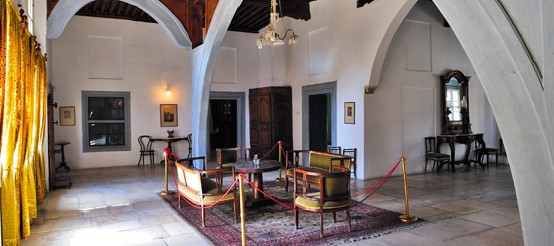
This manor house is one of the most important surviving 18th century buildings in Lefkosia and was restored by the Department of Antiquities to house the Cyprus Ethnological Museum, receiving the ‘Europa Nostra’ award in 1988.
The two-storey building was built in 1793 with local bloc-cut sandstone and was once the residence of the most prominent Dragoman of Cyprus, Hatzigeorgakis Kornesios, who was executed by the Ottomans in 1809.
The architectural plan of the building in the shape of the Greek letter Pi surrounds a central garden with a fountain and a private bathhouse (hamam), which is comprised of three rooms. The servants’ quarters and the kitchen were situated on the ground floor, roofed wooden stairs with a stone base lead to the entrance hall on the first floor from the courtyard, and the official reception room and the living areas, communicated with the reception hall. The official reception room – at the end of the east wing – differs from the the other rooms due to its exceptional wood carved, gilded and painted decoration, which liken it to other official reception rooms in many mansions of the Ottoman Empire.
The office of Dragoman was introduced in Cyprus at the start of the Ottoman rule and was abolished in 1821 with the Greek War of Independence. Dragomans acted as liaisons between the Pasha (high ranking military officials) and the occupied population and were the most important political figures after the Pasha.
National Struggle Museum
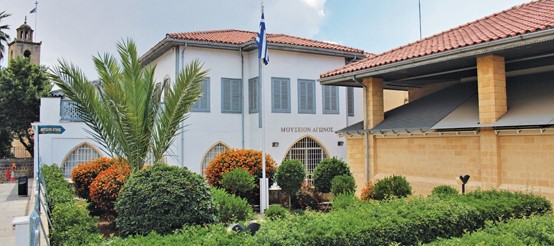
Located in the square near the Archbishopric, the museum houses documents, photographs and other memorabilia from the 1955-1959 National Liberation Struggle against British Rule, and was founded after it ended, with new premises later opened in 2001.


